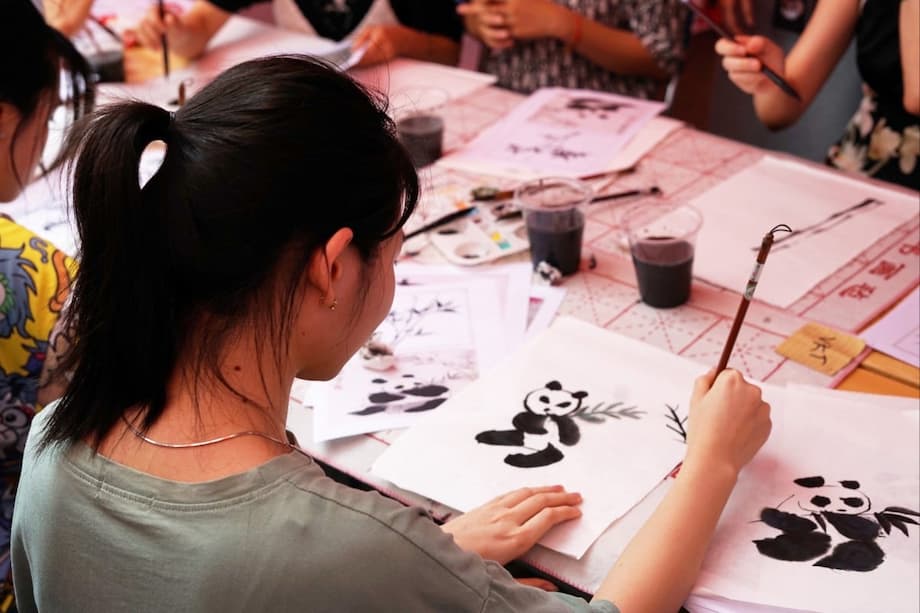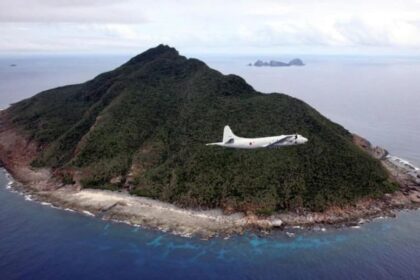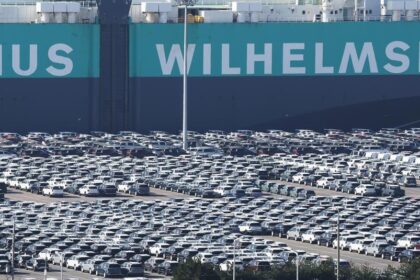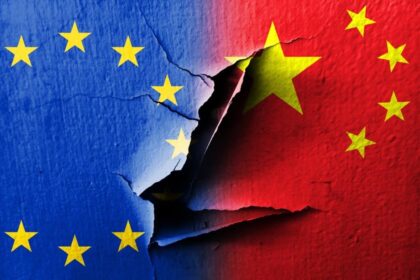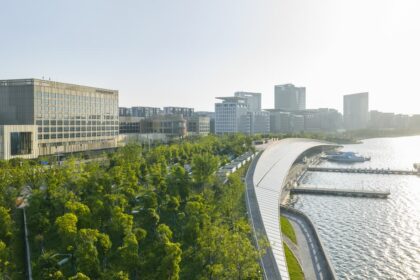Echoes of Empire: French Influence in Modern Vietnam
As Vietnam marks the 80th anniversary of its declaration of independence from French colonial rule, the country stands at a crossroads of cultural memory and shifting geopolitical tides. The grand military parade in Hanoi’s Ba Dinh Square, where Ho Chi Minh proclaimed independence on September 2, 1945, is a vivid reminder of the nation’s struggle to cast off nearly a century of foreign domination. Yet, the legacy of France lingers in the architecture, cuisine, language, and even the very script used to write Vietnamese. For many young Vietnamese, however, these influences are fading into the background, replaced by new currents—most notably, the growing presence of China.
- Echoes of Empire: French Influence in Modern Vietnam
- From Colonial Rule to Cultural Imprint
- Architectural and Culinary Legacies
- Language, Education, and the Waning Prestige of French
- Historical Memory and the Debate Over Colonial Legacy
- France’s Modern Role: Diplomacy, Trade, and Soft Power
- The Rise of Chinese Influence
- Preserving the Past, Embracing the Future
- The Essentials
From Colonial Rule to Cultural Imprint
French colonialism in Vietnam began in earnest in the late 19th century, culminating in the formation of French Indochina in 1887. Over the next six decades, France imposed sweeping changes on Vietnamese society. The French administration seized land, established plantations, and exploited natural resources, often at the expense of local communities. Forced labor, harsh working conditions, and widespread repression left deep scars on the Vietnamese psyche. According to historians, by the 1930s, over 80% of Vietnamese land was controlled by French colonists and their allies, and literacy rates remained low due to restricted access to education in the native language.
Despite the brutality of colonial rule, the French also introduced new technologies, infrastructure, and cultural practices. Railways, telegraphs, and electricity modernized the country. The French built grand boulevards, bridges, and public buildings that still define the skylines of cities like Hanoi and Ho Chi Minh City. The Latin-based Vietnamese script, known as Quoc Ngu, was developed by missionaries and later promoted by the French, replacing Chinese characters and boosting literacy rates. This script remains a cornerstone of Vietnamese identity today.
French influence extended to the legal and political systems, with a centralized government modeled after France and new laws that reshaped Vietnamese society. The education system, though limited in reach, exposed a generation to French language, literature, and philosophy, planting seeds of both collaboration and resistance.
Architectural and Culinary Legacies
Walk through the heart of Hanoi or Ho Chi Minh City, and the French legacy is unmistakable. The yellow-painted presidential palace and foreign ministry in Ba Dinh Square, the neo-classical Hanoi Opera House, and the Notre Dame Cathedral in Ho Chi Minh City are all testaments to French architectural ambition. These buildings, with their ornate facades, domed ceilings, and elegant balconies, continue to draw tourists and locals alike, even if their origins are often forgotten by younger generations.
Nguyen Thi Trang, a 30-year-old Hanoian, visited the foreign ministry headquarters for its “unique architecture” and celebrity appeal, unaware of its French roots. This disconnect is common among Vietnamese youth, who may appreciate the aesthetics but lack knowledge of their colonial origins.
The culinary scene tells a similar story. The iconic banh mi sandwich, with its crusty baguette and fusion fillings, is a direct descendant of French bread, adapted to Vietnamese tastes. Cafés serving strong coffee with sweetened condensed milk line the streets, a legacy of French-introduced coffee culture. Dishes like banh xeo (rice flour pancakes) and even the beloved pho noodle soup bear traces of French culinary influence, blending local ingredients with European techniques.
Nguyen Van Hoan, a bakery owner in Hanoi, acknowledged the French roots of Vietnam’s bread culture but noted that survival depended on adaptation. “French cuisine has had to adapt to match Vietnamese tastes,” he explained, highlighting the dynamic nature of cultural exchange.
Language, Education, and the Waning Prestige of French
For much of the 20th century, French was the language of the Vietnamese elite. It opened doors to government positions, higher education, and international diplomacy. Today, however, the language is losing ground. According to Vietnam’s education ministry, only 400 high-school students chose French for their graduation exams this year, compared to over 358,000 for English and 4,400 for Chinese. While 63,000 people are registered in French language classes nationwide, the numbers pale in comparison to the growing interest in other foreign languages, including Japanese and Korean.
French President Emmanuel Macron’s recent visit to Hanoi was marked by nostalgia and diplomatic ambition. He was reportedly delighted when university students addressed him in perfect French, but such fluency is increasingly rare. The French embassy maintains cultural programs and language classes, but the language’s prestige is now more symbolic than practical for most Vietnamese.
Hoang Thu Ha, a 25-year-old content creator, captured the generational shift: “If I must choose, I would prefer Chinese over French as the second foreign language to study because it feels more familiar. And China is our neighbor.” Her sentiment reflects a broader trend as Vietnam’s youth look to languages and cultures that align with contemporary economic and geopolitical realities.
Historical Memory and the Debate Over Colonial Legacy
The memory of French rule is complex and contested. The 1954 victory at Dien Bien Phu, which ended French colonialism, is celebrated as a triumph of national resilience. Yet, the legacy of colonialism is not solely one of oppression. Many Vietnamese take pride in the architectural, culinary, and educational contributions of the French era, even as they acknowledge the suffering and exploitation that accompanied it.
French-built infrastructure, such as National Route 1 and the north-south railway, helped integrate the Vietnamese economy and laid the groundwork for a unified nation. The Latinized script, chu Quoc ngu, is credited with increasing literacy and facilitating administration. Iconic structures like the Long Bien Bridge in Hanoi, built between 1899 and 1902, are celebrated as symbols of resilience and connection. France has even provided funding for restoration projects, reflecting ongoing cultural ties.
Yet, the darker aspects of colonial rule—forced labor, land dispossession, repression, and cultural erasure—remain sources of pain and debate. Calls for apology and reparations persist, and the legacy of inequality introduced during the colonial period continues to shape Vietnamese society.
France’s Modern Role: Diplomacy, Trade, and Soft Power
In the decades since independence, France has sought to redefine its relationship with Vietnam. Diplomatic ties have warmed, with both countries signing major trade deals and collaborating on projects in energy, infrastructure, and technology. France is Vietnam’s largest European bilateral donor, providing significant financial assistance in health, education, and sustainable development. French companies see Vietnam as a strategic market within ASEAN, and cultural institutions continue to promote French language and values.
President Macron’s recent tour of Southeast Asia, including Vietnam, was part of a broader Indo-Pacific strategy aimed at counterbalancing China’s growing influence. France has positioned itself as a partner offering cooperation “without strings attached,” seeking to expand economic ties and present alternatives to Chinese infrastructure financing. Over 2,000 French companies export to Vietnam, and recent agreements cover areas from nuclear energy to satellite development.
However, France’s influence is constrained by its colonial past and the realities of global competition. While French retains a certain prestige, it is no longer the default language of aspiration. Vietnam’s “bamboo diplomacy”—a flexible approach to international relations—has seen the country upgrade ties with the US, Japan, and France, hedging against Beijing’s assertiveness in the South China Sea and economic coercion.
The Rise of Chinese Influence
China’s proximity and economic clout have made it an increasingly important partner for Vietnam. Trade between the two countries has grown rapidly, and Chinese language study is on the rise. For many young Vietnamese, Chinese culture feels more familiar and relevant than French traditions. This shift is not just about language or economics; it reflects a broader realignment as Vietnam navigates the challenges of regional security, supply chain resilience, and great power rivalry.
Vietnam’s efforts to diversify foreign investment and strengthen multilateral partnerships are partly a response to China’s assertiveness, especially in the contested waters of the South China Sea. At the same time, Chinese influence is visible in everything from business to popular culture, signaling a new era of engagement that is both pragmatic and cautious.
Preserving the Past, Embracing the Future
The debate over how to remember and preserve the French legacy is ongoing. In cities like Hanoi, Ho Chi Minh City, and Dalat, old French villas and public buildings are at the center of restoration and preservation efforts, often with French expertise and funding. These projects are not just about nostalgia; they are part of a broader conversation about identity, heritage, and the role of history in shaping the present.
At the same time, Vietnam is forging new paths. The country’s rapid economic growth, youthful population, and strategic location make it a key player in Southeast Asia. As Vietnamese society becomes more outward-looking, the influences of France, China, and other powers are being reinterpreted and adapted to local needs and aspirations.
For many, the enduring presence of French architecture, cuisine, and language is a reminder of a complicated past. For others, it is simply part of the urban landscape, appreciated for its beauty but disconnected from its origins. The rise of Chinese influence adds another layer to this evolving story, highlighting the dynamic interplay of history, culture, and power in modern Vietnam.
The Essentials
- Vietnam is celebrating 80 years since its declaration of independence from French colonial rule, with major events in Hanoi’s Ba Dinh Square.
- French influence remains visible in architecture, cuisine, and the Latin-based Vietnamese script, but is fading among younger generations.
- French language study is declining, with more Vietnamese youth choosing English or Chinese as second languages.
- France and Vietnam maintain strong diplomatic and economic ties, with recent trade agreements and cultural cooperation.
- China’s influence is rising, reflected in trade, language study, and cultural familiarity among Vietnamese youth.
- Debate continues over how to remember and preserve the French colonial legacy, balancing pride in cultural contributions with acknowledgment of historical injustices.
- Vietnam’s “bamboo diplomacy” seeks to balance relations with major powers, including France, China, the US, and Japan.
- Restoration of French-era buildings and ongoing cultural exchanges reflect the enduring, if evolving, legacy of France in Vietnam.


